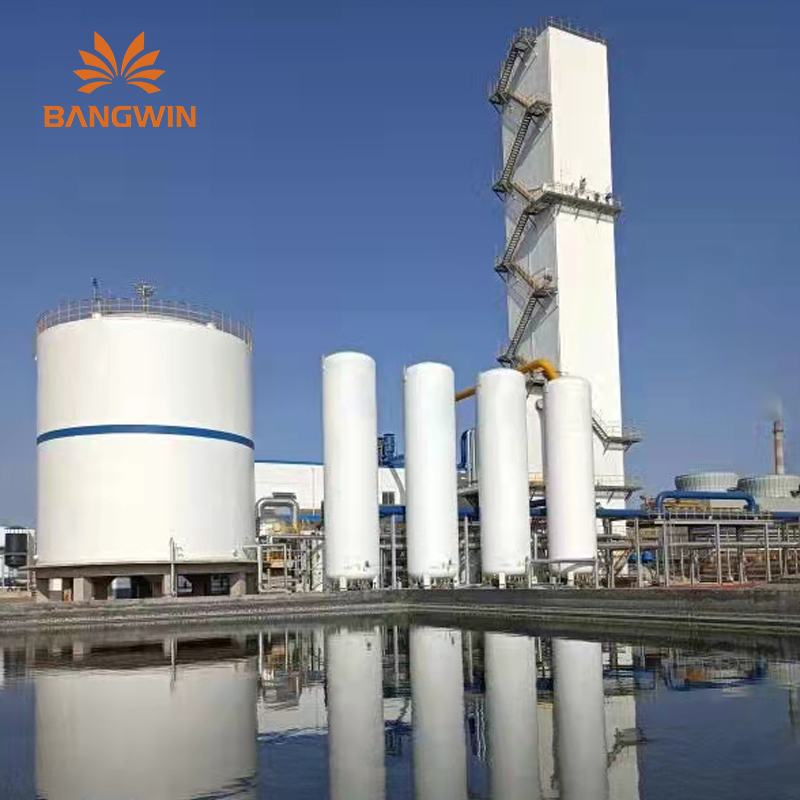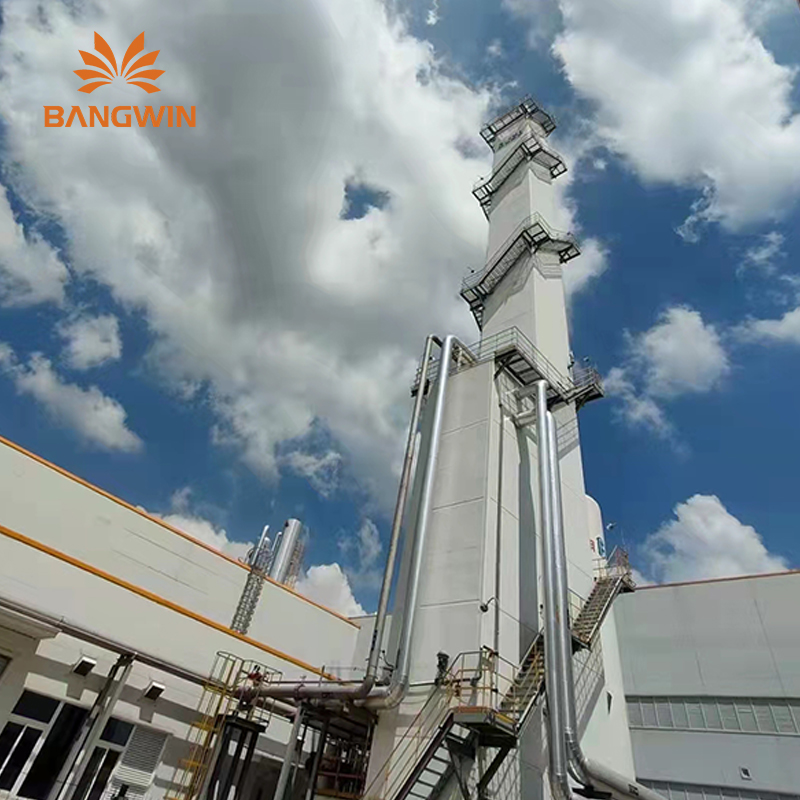-
WhatsApp / Mob : +86 156 5177 2521
-
Email : mrwin@cnbangwin.com
WhatsApp / Mob : +86 156 5177 2521
Email : mrwin@cnbangwin.com
Categories
Latest blog
Tags
What preparations should be made before starting up an air separation plant?
Mar 20 , 2024Air separation equipment consists of air compressor, purifier and air separation tower, expander, oxygen compressor and other main parts. Before starting, all parts of the equipment must be in good condition and ready for operation at any time.
(1) Preparation for starting the piston air compressor
After the air compressor is installed, it should be tested according to the instructions. In daily preparations before driving, you should remember the five words "water, oil, gas, electricity, and safety" and check according to these five aspects.
1) Water: Open the cooling water of the cylinder liner and cooler at all levels, the cooling water of the oil cooler and the inlet valve, check whether the cooling water is smooth and adjusted appropriately;
2) Oil: including cylinder lubricating oil and operating part lubricating oil. Turn the plunger oil pump by hand until the check valve at each oil injection point is opened and oil flows out, and fill the oil injector with cylinder lubricating oil. For the lubricating oil in the running part, focus on checking the oil level gauge of the oil tank (or crankcase) to see whether the oil storage capacity is more than 2/3, and whether the refueling funnel in front of the oil pump is full. If you use an air compressor with a circulating oil pump, you should start the oil pump first and check whether its oil pressure is normal and whether all lubrication points are smooth;
3) Air: Open the purge valves of the oil-water separators at all levels, open the purge valve of the oil-water separator of the purifier, connect a group of purifier valves, and close the main inlet valve of the high-pressure air entering the fractionation tower. If the first-level air inlet valve of the air compressor is equipped with a "top-opening device", it should be opened to allow the air compressor to start with light load;
4) Electricity: Check whether the brush handle of the motor is in the "start" position. For equipment with a low-voltage integrated starter, the rotor "short-circuit handle" should be placed in the "start" position; for equipment with a resistance start controller, the handwheel pointer should be placed at the "0" position. Turn on the current and check whether the voltage is around 380V;
5) Safety: Do not forget the following points during safety inspection:
Check whether the connections and fastening screws of each mechanical part are loose;
Check whether the foot screws on the foundation of the air compressor and motor are loose;
Check whether the inspection period of pressure gauge and oil pressure gauge has expired, and open their valves;
Whether the safety valve calibration period has expired;
Whether the tightness of the belt is appropriate;
Use manpower to turn the flywheel for 2 to 3 turns to check whether the cylinder is stuck;
Whether the surrounding roads are clear and whether emergency parking is easy to handle.
(2) Preparation for starting the air separation tower
Before starting up, the fractionating tower must be thoroughly heated and purged, and the following inspections must be made:
1) Check the verticality of the fractionating tower and adjust it;
2) Check whether the calibration period of the safety valve, pressure gauge and thermometer has exceeded and whether the installation position is correct. Whether the liquid in the liquid level meter and flow meter is at the "0" position (the air liquid level should be filled with colored water, the liquid oxygen level meter and oxygen and nitrogen flow meters should be filled with carbon tetrachloride, and the fraction flow meter should be filled with mercury) ;
3) Prepare oxygen and nitrogen analyzers;
4) Check the switching status of the fractionation tower valves: full joint-1 valve, pass-6 valve, oxygen and nitrogen product delivery valve, all heating valves, blow-1 and blow-2 valves. Fully open high-pressure air inlet valve, oxygen and nitrogen discharge vent valve, fraction outlet valve and pass-7 (or pass-8 valve), pass-1 valve, all pressure gauge valves, analysis valves, liquid level gauge upper and lower valves, Liquid oxygen discharge valve and upper and lower tower purge valves. Open the Section-4 valve and the Section-3 valve 15 turns each, open the Section-2 valve and turn it 2 to 3 turns;
5) Air tightness inspection of the external connecting pipes of the fractionating tower: When the high-pressure air pressure reaches the normal starting pressure, the joints of the high-pressure air inlet flange and the expander bridge connecting pipe should be checked for air leakage. The air tightness of the bridge pipes of the fractionating tower and the expander should be checked according to different conditions, and then wrapped with an insulation layer. This work can be carried out together with the air tightness test of the expander inlet and exhaust valves.
(3) Preparation before starting the purifier
1) The newly installed adsorbent needs to be activated. The regeneration temperature is as required in the instruction manual;
2) Before starting the air separation tower, a set of purifiers should be regenerated for use. Therefore, attention should be paid to the regeneration of the purifier during the heating of the air separation tower before starting. Before starting the complete set of air separation, the correctness of the valve switch should be checked;
3) Check whether the pressure gauge and thermometer are within the calibration period;
4) Pay attention to whether the heating furnace is working normally and whether the safety film is replaced regularly;
5) Connect the cooling water using a set of purifiers;
6) Check the air tightness of all connecting pipelines from the air compressor to the fractionation tower and eliminate leaks.
(4) Preparation work before starting the piston expander
1) Check whether the foot screws are tight and adjust the belt tightness;
2) Add N68 mechanical oil to the crankcase;
3) Connect the thermometer, pressure gauge, and oil pressure gauge and check whether they are correct;
4) Check whether the motor rotation direction is correct;
5) Check the air tightness of the inlet and exhaust valves. Check the air tightness of the intake valve: mechanically open the exhaust valve, the piston is at the bottom dead center, and the intake valves are closed. Remove the exhaust pressure gauge valve joint. If there is an expander outlet bridge valve, Then close the valve. Pass in high-pressure air. When the pressure reaches 2MPa, check whether the pressure gauge valve joint is leaking. After the inspection of the intake valve is completed, the high-pressure air supply is suspended. Loosen the exhaust valve so that it is in a closed state, and mechanically open the intake valve so that the piston is at the bottom dead center. Slowly introduce high-pressure air. When the pressure reaches 2MPa, check whether the pressure gauge valve joint is leaking. Note: When high-pressure air is introduced, the air inlet valve of the expander is only opened about 30° and must be supervised by a dedicated person. In case of speeding, the intake valve should be closed quickly;
6) Adjust the gap between the inlet and outlet valve stems and the push rod. First adjust the cam to the "0" position (that is, the maximum air intake position), and place the piston at the bottom dead center. Loosen the lock nut on the middle push rod, adjust the screw to keep the gap between the intake valve push rod and the valve stem between 0.3 and 0.5 mm, and then tighten the lock nut. Place the piston at the top dead center and adjust the clearance of the exhaust valve in the same way;
7) Check whether there are any obstacles around the machine and whether tools are stored on the machine;
8) Turn the flywheel several times to check whether the intake and exhaust valves are open and the movement mechanism is operating normally. The cam is in the minimum intake position.
(5) Preparations before starting the turbine expander
The inlet and outlet pipes of the expander must be thoroughly heated and blown clean; check the air flotation condition or feel that the air flotation is good when the bearing gas supply pressure of the turbine expander is 0.1 to 0.6MPa; blow the bearing gas supply pipes and sealing pipes Brush clean; connect the bearing air and control the pressure at 0.55~0.6MPa; connect the tachometer; connect the fan cooling water; open the expansion machine outlet valve; close the expansion inlet valve; connect the sealing air and adjust the pressure at 0.5~0.6MPa. 0.6MPa.
(6) Preparation for starting the oxygen compressor
When the oxygen storage bag is filled with 2/3 oxygen, it can be ready to drive. The procedure can refer to the start-up preparations of the air compressor:
1) Water: Connect the circulating water of the cylinder cooling water tank and adjust the water volume. Note that the cooling water should be clean and free of grease and corrosive substances;
2) Oil: Check that the oil level of the lubricating oil in the crankcase is about 1/2 of the oil level gauge;
3) Gas: Open the inlet valve of the oxygen compressor, open the purge valve on the gas-water separator, close the valve that sends oxygen to the oxygenation table and the pressure reducing valve leading to the air storage bag;
4) Electricity: Check whether the motor's brush and the handwheel of the starting rheostat are placed in the "start" position (Note: Motors equipped with frequency-sensitive rheostat do not have a starting brush);
5) Safety: The safety inspection is the same as that of the air compressor.
Notify the oxygen charging station to prepare for bottle filling. The distilled water tank used for lubrication and cooling in the oxygen compressor cylinder should be filled with distilled water, and the dripper should be opened about half a minute before driving to adjust the flow rate.
It can only be started after the above preparations are completed.

